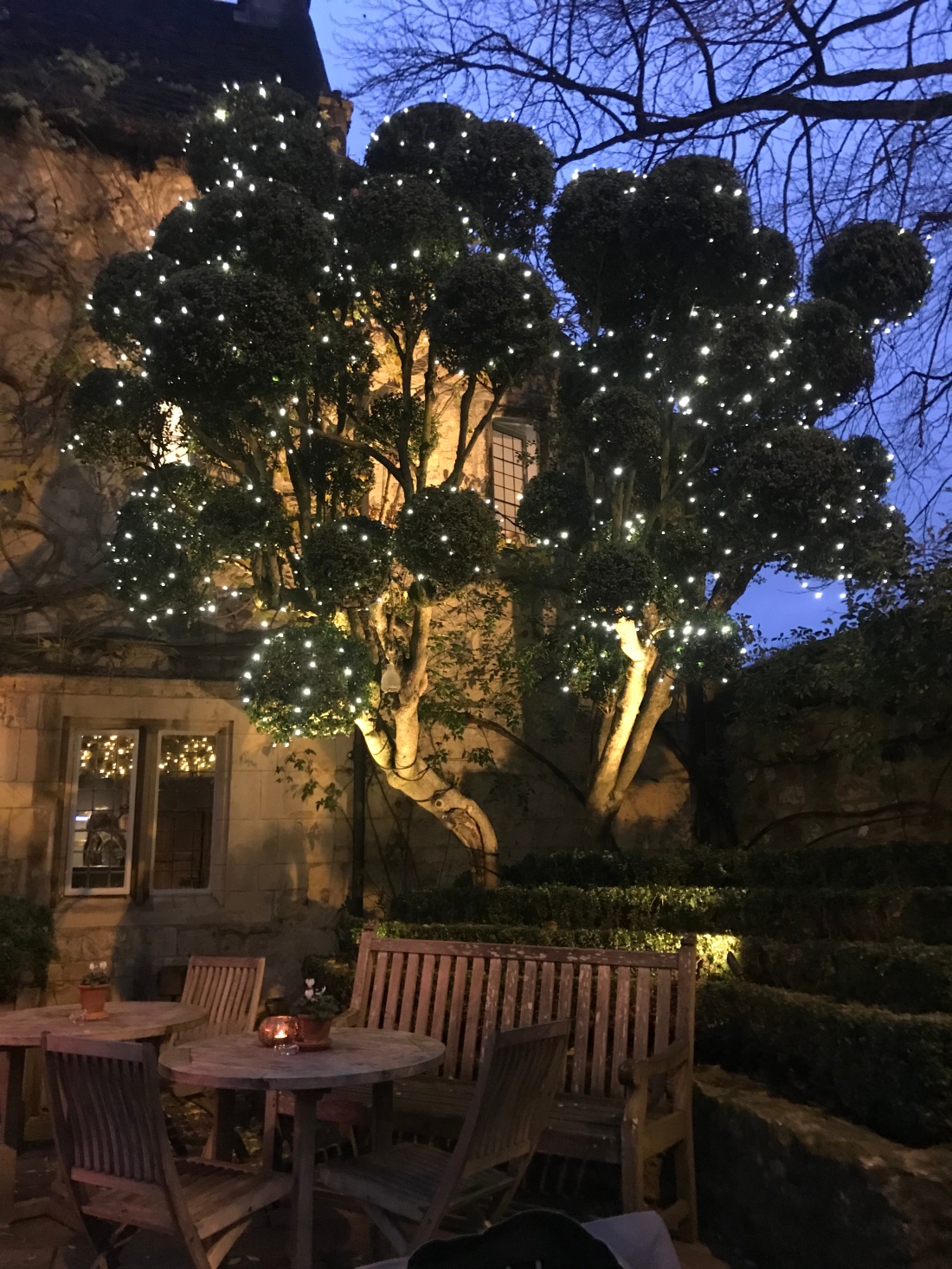The year ends as it began, although everything has changed. I am in a garden with a glass of chilled champagne – one of my favourite sentences in the English language. I am expecting friends. I am alive again.
The box tree is dressed with lights which turn its dark evergreen leaves into spheres of shadow. Joyce wrote of dusk that it is the light which falls, not the darkness. I’ve always wondered if that was an observation born of his myopia. I wonder some more as I sit waiting. It could be that the darkness rises from the earth, that the true state of the garden is not one of the colours of the leaves and the flowers, it is chthonic. As Badiou writes in Black, ‘Let’s see what the satyr’s eye enables us to understand. Let’s see what plants […] are:’. The tracery of the naked Fagus sylvatica trees, the dense twiggy stems of the Crataegus coccinea like a witch’s broom, are dark against the sky. The windows of the hotel are leaded and light spills out, and my mind jumps to Mondrian. The trees testify to a simple truth – that plants take light and make it solid and, in so doing, give us life. And I think of what the Czech playwright Capek wrote in his The Gardener’s Year, that gardeners do not tend flowers, they tend the soil. That the most important element of a garden is the one least seen, least considered.
I have written elsewhere of the three elements which define a garden – the boundary, the intention, the gardener. All the elements of a garden are here. The boundary, an old stone wall, less than 2m/6′ tall wraps us in its arms. Its shelter is emotional more than physical. A simple fountain falls water into a basin, giving the garden a voice. Two blackbirds greet the coming night with rapid scolds as they seek their roosts. I am a gardener, but today I am enjoying all the care of another’s labour: the weeded beds and the low, clipped hedges, the paving swept of leaves. The roses and wisteria on the walls, yet to be pruned – those tasks are just around the corner. It is a space to be still, a place for conversation, and companionship.
When the year began, I did not know what my subjects would be each week. Of the forty-eight postcards, as I think of them, anachronistically, only ten of my subjects have been UK natives: our garden-culture is globally rich as befits our maritime history. Ten have been trees, which surprises me. I love trees, but I didn’t quite realise before just how significant they are to my aesthetic life. I have given you the botanical names along with the common as the botanical names require no translation. Like mathematics, they are one of our attempts at a universal language.
I remember a time before I was a gardener. I would walk around a place and it was like walking through a crowd of strangers. Now, I can be in any city in the northern hemisphere and I greet old friends with their names, names familiar from the gardens of home. I hope these short pieces have given you some pleasure. And some names with which to greet new, but now familiar friends.


Okay, someone has WAY too much free time to prune it like that.
LikeLike
Happy New Year, Tony! That tree was my first post of the year on 5 January – it is rather splendid, isn’t it? I’ve appreciated all your engagement this year – next year the content will be longer and more infrequent.
LikeLiked by 1 person
Happy New Year!
That is how I should write too, but mine is just a collection of article from my weekly gardening column, with only a few short bite tossed in on the off days. If I put more time into writing, I would write more in depth articles in between.
LikeLike